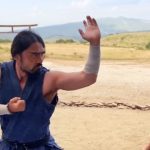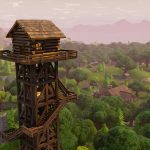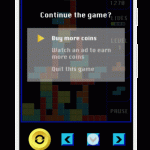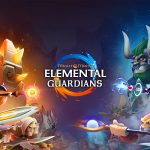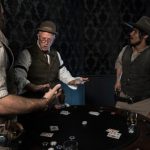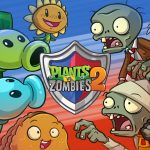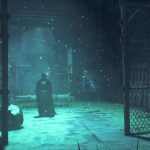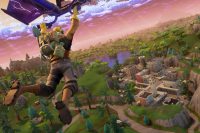7 Questions For The Guy Who Designed Minority Report’s Futuristic UIs
John Underkoffler believes “designing and deploying radically more capable UIs is one of the most important things we can do today.”
Even if you don’t know the name “John Underkoffler,” you surely know his work. His gesture-based interface for Minority Report influenced the 13 years of of user interface and hardware innnovation that have followed.
But Minority Report‘s magical UI is only one of many products to come from both his his days at MIT and his LA studio Oblong. And his consistent quality is why he received a 2015 Cooper Hewitt National Design Award for interaction design. In recognition of the win, Underkoffler agreed to go through our seven-question wringer.
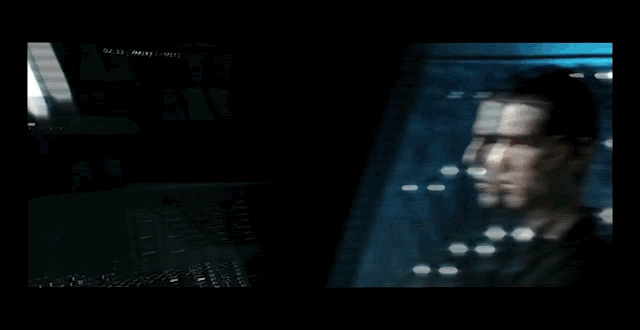
What was the first thing you ever designed?
In ninth grade I wrote a primitive video game for the Apple II Plus in 6502 assembly language. The homage featured a bitmapped representation of the school’s math-and-computer teacher (name withheld), whose notable features included an elegant Sam Elliott mustache and an omnipresent pipe. In the game, his disembodied head bounced around the screen (squash-and-stretch courtesy of pixel-level replacement animation), while the player used the arrow keys to slide a stem-skyward pipe across the screen’s bottom. Tapping the space bar shot (ignoring actual smoker mechanics) the vertically arranged letters PUFF upward from the pipe’s stem. When PUFF hit the head, the head disappeared leaving the mustache to flap off like a sad bat—the game’s reward, such as it was …
(At the time, of course, I didn’t think of building this interactive software as an act of design.)
What is your daily work routine like?
Very approximately: consciousness 5 or 6 a.m.; cats’ needs; brewed beverages; starter-levain’s needs; quarter in the pinball machine of L.A.’s freeways; brewed beverages; meetings, often in one of several mezzanine rooms, on topics from among [management, product design, code design, interaction design, customers (about), customers (with), pre-customers (with); partners (with), industrial design, copy, collateral]; another 25 cents back toward home; avocado trees’ needs; lively discourse with the fabulous Jen Fong, mostly involving the topic of whether either of us has heard from RISD-freshman son; arms of morpheus 11:45 p.m.
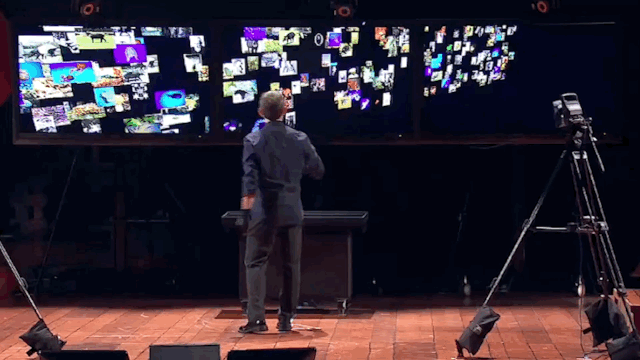
What is your biggest challenge as a designer?
It’s a platitude and an aphorism both that you should always trust your instincts. But it’s constant and constantly tricky work to find the right balance between designing and building exactly in the direction of my personal delight (on the one hand) and optimizing for the broadest audience possible (on the other). There’s a commercial component of my and Oblong’s work’s intent, so getting the balance right is non-negotiable. The trickiness stems I think from the two competing perspectives involving different kinds of instinct.
What’s your favorite thing you own?
It’d been a copy of the Codex Seraphinianus (the 1980s Abbeville edition depicting, er, alligator creation on the dust jacket) until, in the ecstatic frenzy that is everyone’s first visit to Powell’s, I stumbled across the hardcover of Irene Emery’s incredible The Primary Structures of Fabrics. Somehow the book’s meticulous yet loving treatment of one particular art’s minutiae causes a new sort of aesthetics to pop out, and undodgeable fascination ensues.
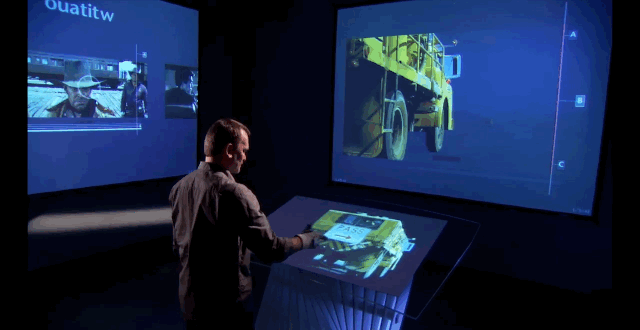
What is the worst job you’ve ever taken, and what did it teach you?
The summer after sophomore year in high school I was a full-time custodian in a garment factory. I didn’t especially mind the work—brooms, mops, trash cans, boxes to be loaded and unloaded, industrial-scale lint filters to be cleaned—but time itself became a double torture. There was the conscious perception of each minute’s sluggish advance toward the end of the shift. But then too: I couldn’t not see—a hundred times a day!—the vastness stretching between that moment and summer’s end, a slow-motion expanse that would preclude learning or making anything. An early lesson about the urgency that a finite lifetime should imply!
If you weren’t a designer, what would you be, and why?
A decent botanist or a bad novelist: the primacy of narrative and the forms and motions of biology are at the center of everything I do.
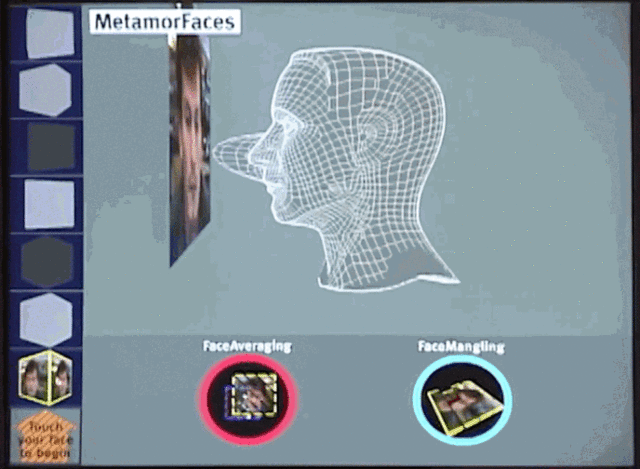
What do you think is the biggest challenge facing the world that design can help solve?
We’re a digital species now—nothing short of apocalypse will change that! The health of our digital society lies, therefore, in the broadest possible distribution of agency. Agency is circumscribed mainly by the UI—the machinery through which human intent is transduced into the machine. So designing and deploying radically more capable UIs is one of the most important things we can do today. At Oblong we built our belief about what this should look like into our mission statement: “to provision the world with new computing forms of durable value and genuine worth, forms profoundly capable, human, beautiful, and exhilarating.”
Fast Company , Read Full Story
(226)



